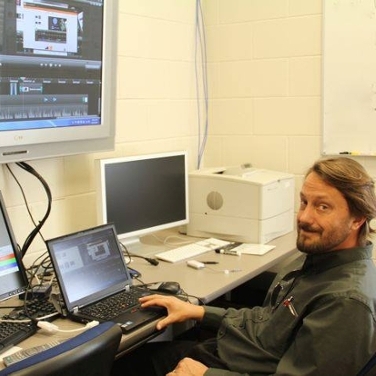E-Learning Kits: Bringing Technology to Teaching
The E-learning community at William & Mary engaged in its inaugural meeting in December of 2011. Nearly three years later, the community maintains its own blog, and has banded together to bring modern technologies to its historical campus. One such technology is the e-learning kit, developed by Academic Engineering Manager, John Drummond.
Drummond has been involved with the E-learning community since its genesis back in 2011, and has had ample experience working with the faculty during his career at William & Mary. He just recently began configuring the e-learning kits so that professors can take their lesson plans to another level.
The kit is comprised of two main pieces of equipment—a laptop and a tablet. This is no ordinary laptop and tablet. The tablet is a special tablet with a screen that only senses the stylus that accompanies it. The laptop has an internal webcam and presentation editing software, called Camtasia. While there are individual pieces of hardware that can also be used with the kit, these are the basic components.
The kit allows professors to develop presentations with more advanced recording and visual aid techniques. Camtasia integrates with Microsoft PowerPoint and affords professors the ability to record and annotate lessons. One professor used the program to record a live class for students to tune into remotely.
The project is in its early stages of implementation. Drummond maintains the kits and lends them out on an unofficial need by need basis. Professors can borrow them for as long as they need. Drummond says that keeping track of the kits and their parts has been a bit of a challenge. As he explains, “As of now, I haven’t had to keep much of an inventory, but soon I might develop a system to keep track of the kits when I lend them out, as well as for professors to check availability.”
Drummond says that he is still discovering the possibilities of the project. The process is rewarding because it is truly a group dynamic. His role is not merely to facilitate the kit’s implementation, but he is also learning with the faculty in order to truly uncover the project’s potential. “There’s no real way for me to perfect the kits on my own,” says Drummond, “but as people find different uses for the technology, we’ll discover more of both its advantages and disadvantages.”
Drummond is optimistic for the future of the e-learning kits. As of now there are only three available kits, but with enough growing interest, Drummond is prepared to configure more.















